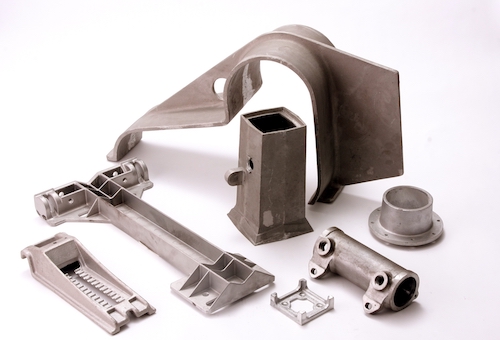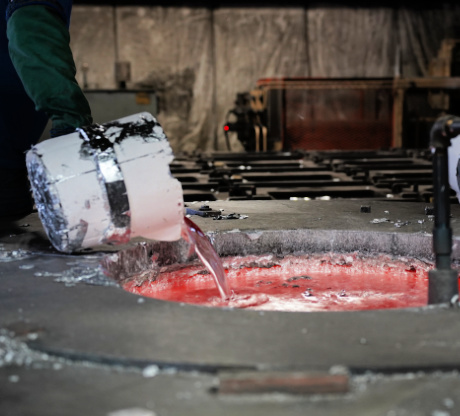3 Simple Techniques For Aluminum Castings Company
Wiki Article
Aluminum Castings Company for Beginners
Table of ContentsExcitement About Aluminum Castings CompanyThe Single Strategy To Use For Aluminum Castings CompanyRumored Buzz on Aluminum Castings Company8 Simple Techniques For Aluminum Castings CompanyExcitement About Aluminum Castings CompanyGet This Report about Aluminum Castings CompanyThe 7-Minute Rule for Aluminum Castings CompanySome Known Incorrect Statements About Aluminum Castings Company
There are 2 key sorts of die spreading made use of in the aluminum spreading market: hot chamber die spreading and chilly chamber pass away spreading. The main distinction between these approaches is just how the molten steel is provided to the mold. In warm chamber die casting, commonly utilized for reduced melting factor metals, the melting pot is directly linked to the maker, and a plunger compels the product through a gooseneck into the die dental caries.
Some Known Facts About Aluminum Castings Company.
In these techniques, the mold is intentionally damaged or broken away in order to draw out the finished aluminum casting. Usual processes under the category of expendable mold spreading include (investment spreading),,, and investment casting. When making personalized light weight aluminum components making use of expendable mold and mildews, makers pour molten aluminum or light weight aluminum alloys into the mold and mildew, which is then busted apart to release the strengthened steel component.The is just one of the oldest and most favored kinds of light weight aluminum casting. It includes condensing specialized foundry sand, commonly strengthened with clay or material, around a precisely crafted multiple-use pattern that figures out the shape and inner details of the ended up aluminum item. The pattern system integrates risers and vents to take care of the circulation of molten metal and to avoid casting defects such as shrinking porosity.
Our Aluminum Castings Company PDFs

This mold and mildew is then preheated prior to the putting of liquified aluminum or light weight aluminum alloy. As the metal loads the covering, it records the complex details and fine surface area finish of the mold and mildew. When cooled, the ceramic is mechanically or chemically damaged away, enabling the look at this site elimination and separation of private actors parts.
The 3-Minute Rule for Aluminum Castings Company
Permanent mold spreading uses reusable metal mold and mildews and is optimal for mass manufacturing with regular high quality and less waste. Expendable mold and mildew spreading uses single-use molds, like sand or foam, using layout adaptability and lower tooling prices for models or short runs. Pass away spreading is best for generating high volumes of aluminum parts that require tight tolerances, fine information, and smooth surfaces.The Carat weight features sophisticated control systems for precise process administration, consisting of automated ladling, real-time quality control, and energy-efficient procedure. The Toshiba Machine DC-J Series includes pass away casting equipments suitable for aluminum. Understood for their durable construction and high shot efficiency, these equipments make certain efficient and precise spreading. They feature advanced hydraulic and control systems for regular quality, together with real-time surveillance, automatic lubrication, and user-friendly programs user interfaces.

While aluminum can be used in its pure kind, it is often alloyed with other metals to boost its properties or the properties of the other steels. Aluminum alloys are classified right into 8 collection, phoned number from one to eight.
See This Report on Aluminum Castings Company
This alloying enhances the strength and hardness of aluminum but decreases its ductility and corrosion resistance. The 3000 collection alloys are largely alloyed with manganese.The 4000 series alloys are alloyed with silicon, which lowers the melting factor and boosts fluidness. This makes it a prominent selection for casting, as it is easy to form in its liquified state.
The Single Strategy To Use For Aluminum Castings Company
This collection is identified as a high-strength alloy, particularly suited for sheet and plate applications as a result of its excellent weldability. Its resistance to corrosion from acids and alkalis makes it perfect for usage in rough and hostile atmospheres (Aluminum Foundry). The 6000 collection alloys are alloyed with both magnesium and silicon, providing a balance of stamina, mechanical buildings, and deterioration resistanceHandling the 6000 collection requires specialized and sophisticated tools, which can be complicated and pricey. This series is known for its superb deterioration and oxidation resistance, as well as its convenience of coating, treatment, and workability. The 7000 collection aluminum alloys are the greatest and most sturdy among light weight aluminum kinds, with strength similar to around two-thirds of industrial-grade A3 steel.
Not known Details About Aluminum Castings Company
Zinc is the primary alloying aspect in the 7000 series, enhancing the hardness of the aluminum, even though zinc's hardness resembles that of light weight aluminum on the Mohs range. The 8000 series aluminum alloys are primarily alloyed with tin, along with percentages of copper and nickel (Sand Molding). While these alloys use lower toughness contrasted to other collection, they succeed in machinability and use resistanceLight weight aluminum cast heatsinks are electrically conductive, enabling them to be based effectively. They are often cast with integrated attributes that decrease the need for additional procedures, such as additional machining or assembly, leading to further cost financial savings. Light weight aluminum spreading is often used to produce braces for both heavy-duty industrial equipment and family devices.
Aluminum Castings Company Fundamentals Explained
The single-piece building and construction of light weight aluminum braces boosts their strength and toughness, reducing the chance of failing. If openings are called for, they can be consisted of straight in the spreading mold, decreasing the demand for post-production completing (https://trello.com/c/6pYqyDhw). Manufacturers have significantly embraced light weight aluminum casting for golf tools because of its sturdiness, security, and convenience in shapingReport this wiki page